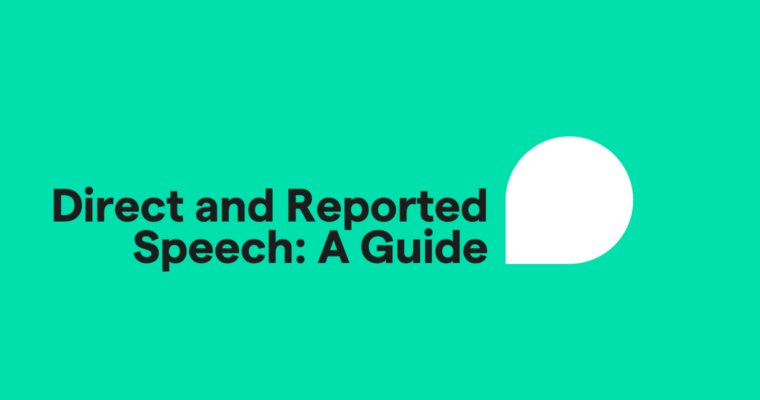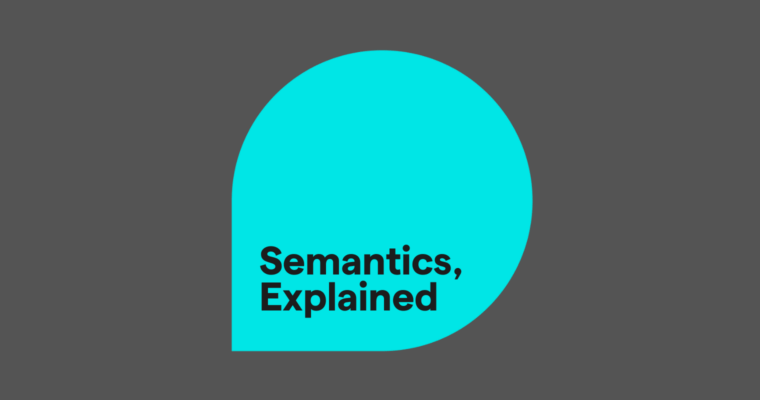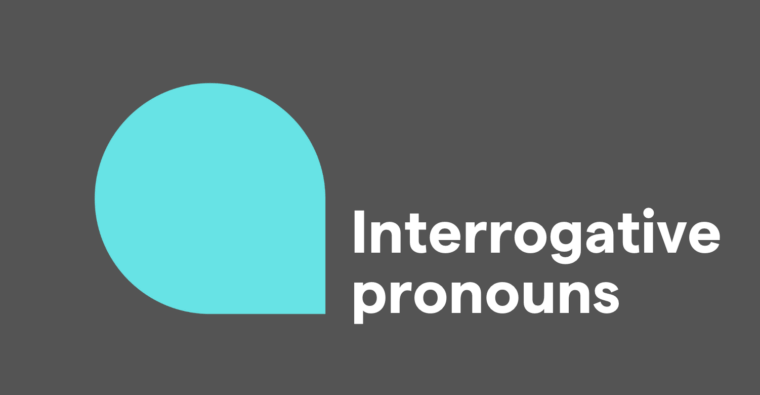
Writing often includes references to spoken words. Examples of this are dialogue in novels, quotes in articles, and paraphrased discussions in blogs. Written speech can be categorized into two types: direct and reported speech. Both types are crucial for effective communication. Knowing when and how to use each improves your writing and communication skills. This is particularly important in narratives, journalistic writing, academic texts, and professional correspondence.
In this blog post, we’ll explain direct and reported speech, explore their differences, review common mistakes, and demonstrate their correct usage through a variety of examples.
Table of contents
What is reported (indirect) speech?
Direct vs. indirect speech: What’s the difference?
When to use direct vs. indirect speech
Rules for converting direct to indirect speech
Special cases in indirect speech
Common mistakes with direct and reported speech
Direct and reported speech FAQs
What is direct speech?
Direct speech is an exact quote in a sentence. In nonfiction writing, it’s a person’s exact words. In fiction writing, such as plays, and occasionally in creative nonfiction, such as personal essays, it’s a character’s dialogue.
Direct speech is generally used in interviews, plays, narratives, and conversations. It is also sometimes used in reported pieces. In most cases—but not plays and interview transcripts—it’s enclosed in quotation marks and paired with a reporting verb like said or asked.
With direct speech, the tense and word order the speaker used originally are retained. This means direct speech isn’t always grammatically correct. A writer captures the speaker’s authentic voice by leaving the speaker’s original words intact (or by writing dialogue that isn’t grammatically correct).
Here are a few examples of direct speech:
What is reported (indirect) speech?
Reported, or indirect, speech is written speech that reports what a person said without quoting them verbatim. It may involve rephrasing, paraphrasing, and grammatical changes.
With indirect speech, the verb tense and pronouns are adjusted to fit the narrator’s perspective. Take a look at these examples:
- Direct: “We waited all afternoon for you to arrive!” Kacie said.
- Indirect: Kacie told me they’d waited for me all afternoon.
Indirect speech does not go inside quotation marks. Instead, it’s paired with verbs and nouns or pronouns that communicate that it is speech, like “he asked,” “they told us,” and “she said.”
Alternative reporting verbs and their impact on tone and meaning
With indirect speech, you lose the original speaker’s tone and word choice to convey meaning. Usually, writers make up for this by describing indirect speech with words like:
- Insisted
- Suggested
- Shouted
- Recommended
- Implied
Consider how these verbs communicate emotion and other aspects of the speaker’s tone, like authority or urgency. Verb choice can also reflect the relationship between the speaker and the listener. Here are a few examples that illustrate this:
- Authoritative: Kyle told Javier that he should arrive early for the interview.
- Advisory: Kyle suggested that Javier arrive early for the interview.
- Subtle: When Yulia asked for my friend’s number, she implied she’d be calling him the next day.
- Assertive: When Yulia asked for my friend’s number, she said she’d be calling him the next day.
- Forceful: Enrico commanded them to stop.
- Neutral: Enrico told them to stop.
When determining whether direct or indirect speech is the better choice, think about the type of sentence you’re writing. Generally, any emotionally charged sentence, like an imperative sentence or interrogative sentence, is best written as direct speech.
Direct vs. indirect speech: What’s the difference?
There are several differences between direct and indirect speech. They include:
Structure
Direct speech reports the exact words spoken by a person, enclosed in quotation marks.
- “I’ve got the files ready,” Maha said.
Indirect speech involves paraphrasing what was said without using the speaker’s exact words.
- Maha told me the files were ready.
Use of quotation marks
Direct speech requires quotation marks around the spoken words. Indirect speech does not.
- “Hello!” he said.
- He said hello to me.
Tense usage
Direct speech nearly always preserves the quote’s original tense.
- “Aren’t we eating right now?” she asked.
Indirect speech typically involves backshifting, which is where the tense shifts backward, depending on the reporting verb. Often, this means present tense shifts to past tense.
- She asked if we were eating at that moment.
Pronouns
Direct speech keeps the pronouns used by the original speaker. Indirect speech adjusts pronouns to match the reporter’s perspective.
- “You both got accepted, right?” he asked.
- He asked if we’d both been accepted.
Tone and emphasis
Direct speech preserves its speaker’s exact tone, emphasis, and style. Indirect speech may alter the tone, often due to paraphrasing and recontextualizing the speech.
- “Don’t forget to bring your headphones!” James exclaimed. “You’ll want them, trust me!”
- James insisted that I bring my headphones.
Punctuation
When writing direct speech, include a comma before the quotations and capitalize the first word within them.
- Dahlia responded, “Dogs’ instincts are always right. Humans, not so much.”
Sentences that include indirect speech follow the same punctuation rules and structure as every other sentence.
- Dahlia affirmed that dogs have superior instincts to humans.
When to use direct vs. indirect speech
Use direct speech when the speaker’s exact wording is important, like a direct quote in a legal statement or a character’s dialogue in a story. Use indirect speech for summaries, paraphrasing, or maintaining flow in formal and academic writing.
Generally, indirect speech is more succinct and easier to fit into the overall tone of your work. However, direct speech is a clear report of what a person said, so choose it when clarity is most important.
Regional differences between direct and indirect speech
US and UK English have different conventions surrounding direct and indirect speech. Generally, UK English uses indirect speech more often, especially in conversations and news reporting. In contrast, US English typically favors direct speech in these areas because it highlights the speaker’s tone and intent.
Stay consistent, whether you opt for direct or indirect speech in your writing. Switching between them can confuse readers. In spoken English, however, it’s much easier to switch between them, and switching often enables you to highlight tone and meaning shifts.
Here’s an example:
So, we were driving to the mall, right, and she told me I needed to stop. She was like, “You need to stop now!” And I said, “We can’t stop, we’re going 80 on the highway, and there’s no safe place to do that.” But she was so insistent because, apparently, I ran over a traffic cone, and we were dragging it.
Rules for converting direct to indirect speech
Rule 1: When to change tense (backshifting)
When the reporting verb is in the past, follow these guidelines to backshift effectively:
- Present simple → Past simple
- Present continuous → Past continuous
- Present perfect → Past perfect
- Will → Would
- Can → Could
Rule 2: When not to change tense in indirect speech
Although backshifting is a common rule, it’s not always required. Maintain the speech’s tense in the following scenarios:
When the reporting verb is in the present or future tense
You don’t need to backshift if the reporting verb is in the present tense (e.g., says, tells) or future tense (e.g., will say).
- Direct: He says, “I’m too busy to come to the party.”
- Indirect: I know he will say he’s too busy to come to the party.
When the original statement expresses a universal truth, fact, or unchanging condition
You don’t need to shift the tense, even if the reporting verb is in the past.
- Direct: Buddha said, “We make the world with our thoughts.”
- Indirect: As Buddha said, we make the world with our thoughts.
Optional backshifting for stylistic reasons
Even when backshifting is grammatically allowed, it’s sometimes omitted for stylistic clarity or to maintain relevance, especially if the original quote feels current or significant.
- Direct: “You must keep trying,” the professors said.
- Indirect: Both professors said we must keep trying.
Rule 3: Pronoun adjustments
Adjust pronouns based on who is speaking to whom.
- I → he/she (or they)
- You → I/he/she/they
- We → they
Rule 4: Time/place word changes
- now → then
- today → that day
- tomorrow → the next day
- yesterday → the previous day
- here → there
- this → that
Rule 5: Converting complex sentences
Be sure to maintain a consistent tense and pronouns when you adjust multiple clauses in a sentence.
- “I will go home and then call you,” she said.
- She said that she would go home and then call me.
Rule 6: Omitting that in indirect statements
You can often omit that in informal speech or writing. However, including that is often preferred for clarity in formal writing.
- She said (that) she was tired.
Special cases in indirect speech
Yes/no questions
When writing a yes/no question in indirect speech, use if or whether.
- “Are you coming?”
- He asked if I was coming.
WH questions
With questions, keep the question word (who, what, when, where, why, how), but structure the sentence as a statement.
- “Where are you going?”
- He asked where I was going.
Commands and requests (affirmative and negative)
For commands and requests, use the reporting verb + to–infinitive. Reporting verbs include told, asked, requested, ordered, and advised. For negatives, add “not to.”
- “Sit down,” she said
- She told me to sit down.
- “Don’t be late,” he said
- He told me not to be late.
Common mistakes with direct and reported speech
Mistake 1: Tense confusion
If you forget to backshift when necessary, a sentence can become confusing.
Tip: Always check the tense of the reporting verb and backshift accordingly.
Mistake 2: Incorrect pronoun usage
Retaining original pronouns in indirect speech can be confusing and obfuscate the speaker’s identity.
Tip: Always adjust pronouns to reflect the sentence speaker’s perspective.
Mistake 3: Failing to change time/place references
Indirect speech rarely occurs at the same time as the direct speech it’s reporting. Be sure to omit words like today and here.
Tip: Always shift time and location references appropriately.
Mistake 4: Mixing direct and indirect forms
Do not mix direct and indirect speech in one phrase. Here is an example:
- She said “I love it and that she would buy it”
Tip: Stick to one reporting style per statement.
Direct and reported speech FAQs
Can you use both direct and indirect speech in one sentence?
Yes, but it should be stylistically intentional and grammatically sound.
Is backshifting always required in indirect speech?
No. If the reporting verb is in the present, or if the original statement is still true, backshifting may not be necessary.
Can indirect speech be used in storytelling?
Absolutely. Indirect speech can help maintain a formal or narrative tone and reduce repetition.
Are quotation marks ever used in indirect speech?
No. Quotation marks are only used in direct speech.
Is indirect speech more formal?
Typically, yes, indirect speech is considered to be more formal than direct speech. This is especially true in academic and professional writing.






